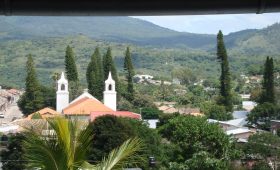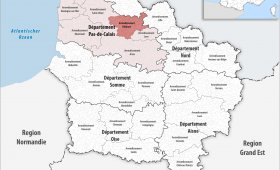Exploring Seonamsa Temple: A Cultural and Natural Retreat in South Korea
Seonamsa Temple, located on the eastern slope at the west end of Jogyesan Provincial Park in Suncheon, South Jeolla Province, is a remarkable destination for those interested in Korean Buddhism and natural beauty. This temple, belonging to the Taego Order, is steeped in history and surrounded by stunning landscapes. Let’s delve into what makes Seonamsa Temple a noteworthy place to visit.
The History and Cultural Significance of Seonamsa Temple
Seonamsa Temple is renowned for its historical and cultural significance. The temple’s name, meaning “Xian’s Precipice,” is derived from a legend about an immortal who played the game of Go here. The temple is home to 19 National Cultural Properties, making it one of the richest in cultural treasures among Korean Buddhist temples.
Seonamsa is known for its focus on Seon, a form of Korean Zen Buddhism that emphasizes meditation as a path to enlightenment. The temple’s serene environment provides an ideal setting for spiritual reflection and practice.
Discovering the Temple Grounds
As you approach the temple, you’ll encounter two rainbow-shaped bridges, with Seungseon Bridge being the larger of the two. Beyond the bridge lies Gangseon Pavilion and the picturesque Samindang pond, featuring a small islet with an evergreen tree. These features create a tranquil and visually appealing setting.
The temple complex includes impressive structures like the Main Hall, known as Daeungjeon, which houses a statue of Buddha. The architecture harmonizes beautifully with the surrounding Jogye mountains, offering a blend of natural and man-made beauty.
Visitors can explore various meditation halls and pavilions, each providing a unique space for contemplation. The bell pavilion is a highlight, where you can participate in the traditional practice of ringing the bell for purification and good fortune.
The Natural Beauty Surrounding Seonamsa Temple
Seonamsa Temple is situated within Jogyesan Provincial Park, offering access to some of South Korea’s most stunning natural landscapes. The area is known for its lush forests, vibrant spring flowers, and colorful autumn foliage.
For hiking enthusiasts, a trail to the left of the temple leads to Maaeburi, a 17-meter-high sculpture engraved on a rock. The trail offers a rewarding experience with views of the surrounding nature.
Spring and fall are particularly beautiful times to visit, with blooming flowers and autumn colors enhancing the temple’s natural charm.
When to Visit Seonamsa Temple
Seonamsa Temple is accessible year-round, with each season offering its own appeal. Spring (April and May) brings blooming cherry blossoms and azaleas, while autumn (September to November) showcases vibrant foliage. Summer offers lush greenery, and winter provides a serene, snow-covered landscape.
Getting to Seonamsa Temple
Seonamsa Temple is located about 30 kilometers from Gwangju City. The nearest major airport is Gimhae International Airport in Busan. From the airport, you can take a bus to Gwangju City, followed by a local bus or taxi to the temple.
Alternatively, you can travel by train to Gwangju Station and continue to the temple by local transport. The journey from Gwangju takes approximately one hour.
Local Transportation and Accommodation
Once at Seonamsa Temple, getting around is straightforward. The temple offers shuttle services to nearby hiking trails and points of interest.
Accommodation options near the temple include guesthouses and traditional Korean hanok stays. For a more immersive experience, consider a temple stay at Seonamsa, where you can participate in meditation sessions and learn about Buddhist teachings.
Seonamsa Temple offers a unique blend of cultural heritage and natural beauty, making it a worthwhile destination for travelers seeking a deeper understanding of Korean spirituality and nature.




